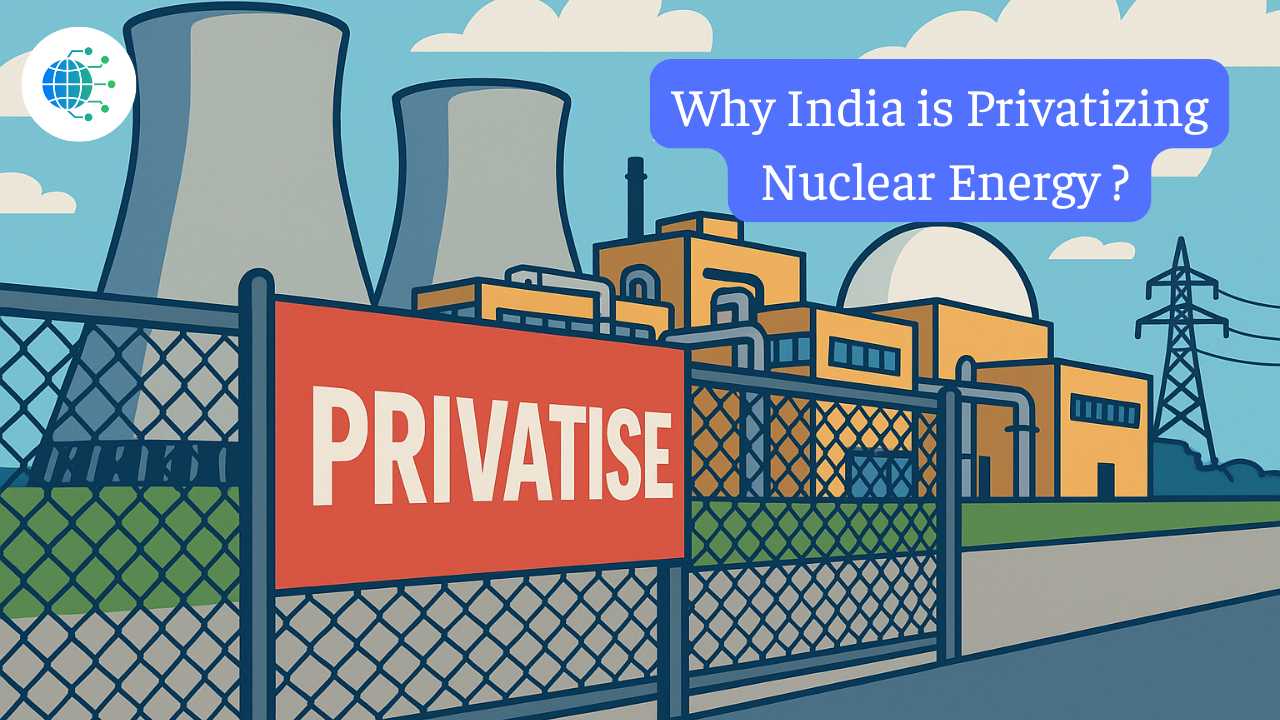
Sarthak Tyagi
Web Developer | AWS Cloud Architect

India is pushing to expand its nuclear energy sector as part of its commitment to sustainable energy, aiming for 500 GW of non-fossil fuel-based energy by 2030. Currently, nuclear power contributes about 2% to the nation's electricity, with a capacity of around 8 GW. The government is opening this sector to private players to accelerate growth and innovation.
The main drivers include meeting growing energy needs while reducing carbon emissions, attracting significant private investments, and leveraging advanced technologies like SMRs. Legislative amendments, such as changes to the Atomic Energy Act, are underway to allow private companies to invest and operate nuclear plants, potentially allowing up to 49% foreign investment.
India's move towards privatizing its nuclear energy sector, as observed in recent developments, reflects a strategic shift to address both energy security and climate commitments. This note provides a comprehensive overview, drawing from various sources to elucidate the reasons, statistics, and implications, particularly as of May 22, 2025.
India's nuclear energy landscape currently comprises 24 operable reactors with a total capacity of 8,055 MWe, approximately 8 GW, contributing about 2% to the nation's total electricity generation of 1,958 TWh in 2023. This modest share underscores the need for expansion to meet rising energy demands and climate goals, such as achieving 500 GW of non-fossil fuel-based energy by 2030, as pledged at the COP26 Summit in 2021 The Hindu.
The decision to involve the private sector is multifaceted, driven by the need for capital, technological advancement, and operational efficiency. Key reasons include:
| Metric | value |
|---|---|
| Current Nuclear Capacity | ~8 GW (8,055 MWe) |
| Nuclear Generation Share (2023) | 2% of total electricity |
| Target Nuclear Capacity by 2047 | 100 GW |
| Investment Sought from Private Sector | $26 billion |
| Non-Fossil Fuel Energy Target by 2030 | 500 GW |
| Planned Operational SMRs by 2033 | At least 5 |
| Proposed Capacity Increment (in-principle) | 32 GWe (as of Sept 2024) |
While the move is promising, it is not without controversy. X posts, such as one from February 2025 by @rajuparulekar, raise concerns about private entities like Adani entering the sector, citing nuclear energy's reserved status and potential safety risks. Public acceptance, liability issues, and the need for a robust regulatory framework remain challenges, as noted in discussions from The Hindu.
India's privatization of nuclear energy is a strategic response to its energy and climate challenges, leveraging private capital and technology to meet ambitious targets. As of May 2025, legislative changes and investment drives are underway, with significant implications for the nation's energy future. This move, while promising, requires careful navigation of legal, safety, and public perception issues to ensure success.